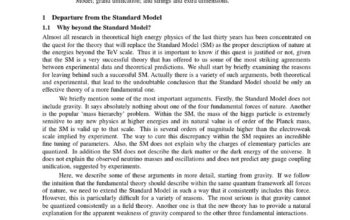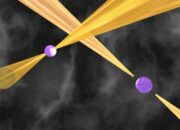Throughout the annals of space exploration, the quest to understand cosmic phenomena has compelled scientists to innovate extraordinary measures. Enter the realm of ray guns in space: instruments designed to detect and analyze cosmic rays. Cosmic rays, high-energy particles originating outside the Earth’s atmosphere, hold fascinating insights into the universe’s origins and the fundamental forces at play within it. This article closely examines the advanced detectors launched on shuttle missions, elucidating their types, functionalities, and the sophisticated knowledge they provide.
The Nature and Origins of Cosmic Rays
Cosmic rays primarily consist of protons and atomic nuclei that traverse interstellar space at velocities approaching the speed of light. Their origin remains an active field of inquiry, with theories suggesting their genesis from supernovae, active galactic nuclei, or even primordial black holes. Each interaction between these high-energy particles and Earth’s atmosphere generates cascading electromagnetic phenomena, detectable by sophisticated instruments. Understanding these enigmatic particles grants critical insights into the fabric of the cosmos, from the mechanics of stellar formation to the behavior of matter at high energies.
Types of Cosmic Ray Detectors
Over the years, scientists have developed a variety of cosmic ray detectors, each with unique methodologies tailored to distinct research objectives. These instruments can be classified into several categories, each contributing to the broader understanding of cosmic rays.
- Scintillation Detectors: These devices utilize special materials that emit light when struck by charged particles, converting the energy of the impact into a quantifiable photon emission. The emitted light is then detected and analyzed, allowing researchers to infer the energy and identity of cosmic rays. Scintillation detectors are favored for their sensitivity and rapid response time, proving indispensable in various space missions.
- Gas Cherenkov Detectors: Another prevalent detector type, gas Cherenkov detectors exploit the phenomenon where charged particles exceed the speed of light in a specific medium (not a physical vacuum). When this threshold is crossed, a measurable shockwave of light is produced. By capturing and analyzing this Cherenkov radiation, scientists can deduce both the velocity and energy of cosmic rays, illuminating their characteristics with remarkable precision.
- Water Cherenkov Detectors: Similar in principle to gas detectors, water Cherenkov detectors employ vast quantities of water as their medium. This type of detector is often utilized in large-scale observatories, where the sheer volume improves the likelihood of detecting rare cosmic events. The expansive areas of these observatories allow them to capture extensive air showers generated by high-energy cosmic rays interacting with Earth’s atmosphere.
- Magnetic Spectrometers: These remarkable instruments leverage magnetic fields to bend the paths of charged particles. By measuring the dispersion resulting from this bending, scientists can ascertain the momentum and charge of the particles. Such spectrometers are integral in distinguishing between protons and heavier nuclei, providing invaluable data necessary for cosmic ray composition studies.
- Muon Detectors: Muons, a type of unstable particle created during cosmic ray interactions, serve as essential biomarkers in the study of cosmic rays. Detectors that focus on muons typically exploit their unique penetrating power, enabling them to traverse various materials unimpeded. By analyzing muon flux and energy, researchers can garner insights into cosmic ray source distributions and cosmic processes.
Evolution of Cosmic Ray Science
The development of cosmic ray detectors has significantly transformed our understanding of astrophysical phenomena. Early detectors were rudimentary, employing simple electronic components or photographic plates. However, advances in technology have facilitated the construction of sophisticated detectors capable of higher sensitivity and precision. The evolution from analog to digital detection systems further revolutionized data analysis, allowing for real-time monitoring and extensive data collection.
Notable Shuttle Missions and their Contributions
NASA’s Space Shuttle program was instrumental in deploying advanced cosmic ray detectors into low-Earth orbit. Noteworthy missions such as STS-67 and STS-91 provided extensive data collections, wherein detectors studied the isotopic abundances and energy distributions of cosmic rays.
The Cosmic Ray Energetics and Mass (CREAM) experiment, for example, launched aboard the International Space Station (ISS), incorporated a suite of cutting-edge detectors. This mission’s results have shed light on the composition of high-energy cosmic rays and their modifications upon entering Earth’s atmosphere. The amalgamation of varied detection technologies onboard these missions has enabled a multifaceted exploration approach, enriching our understanding of cosmic ray science.
Implications for Future Research
The ongoing utilization of cosmic ray detectors aboard contemporary space missions continues to provide fertile ground for discovery. Understanding cosmic rays aligns with fundamental questions regarding dark matter, cosmic evolution, and the limits of particle physics. As researchers pursue the intricacies inherent in cosmic rays, it is apparent that these instruments, colloquially dubbed “ray guns,” are not mere technological curiosities but essential tools that bridge gaps in our comprehension of the universe.
In conjunction with terrestrial laboratories and observatories, the data gleaned from space can lead to groundbreaking revelations. The interconnectivity of cosmic ray studies fosters an interdisciplinary dialogue, linking astrophysics, particle physics, and cosmology. Thus, the legacy of cosmic detector technologies not only enhances our grasp of high-energy phenomena but also redefines our exploration of the cosmos itself.
In conclusion, the journey of cosmic ray detectors launched on space shuttles exemplifies human ingenuity and the unyielding quest for knowledge. With each advancement in detection technology, we inch closer to unraveling the mysteries surrounding cosmic rays—shining a light on the very essence of our universe.












